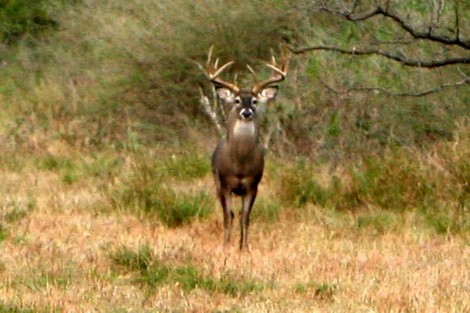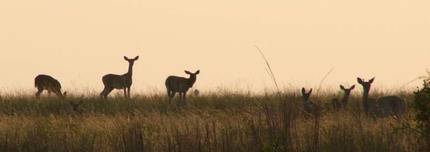
Daylight observations are an ideal way to survey a white-tailed deer herd to determine the herd composition (sex ratios), reproductive success (% fawn crop), and the body condition of deer in a given area. Collecting daylight observations is an easy way to survey the deer herd on your property and data are easy to collect, often incidentally to other activities. Data collected during daylight observations should include sex (buck or doe), age (adult or fawn), and antler quality (number of points, spread, and anything else you can ascertain).
The best time to conduct daylight observation surveys is towards the end of summer and into early fall. In general from mid-August to mid-September is ideal because bucks have identifiable antlers, does are active and moving readily, and the majority of the fawn crop should be old enough to be active, be seen, and be recorded. In addition, this is a great time to collect daylight data because most hunters and land managers are out getting geared up for the upcoming hunting season. All you have to do is work up a data sheet or carry a notepad, carry a trusty set of binoculars and/or a spotting scope, and record animals observed while in the field. Continue reading “Daylight Observation Surveys to Determine Deer Herd Composition”

